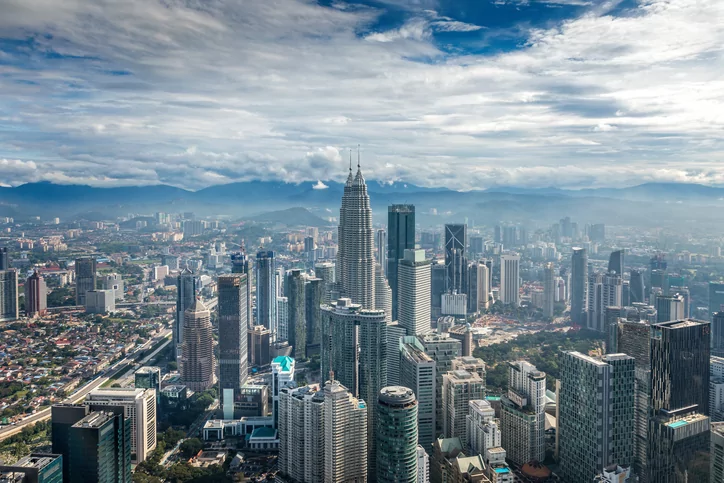Malaysia has witnessed remarkable growth in its data center sector. Fueled by digital transformation, increasing internet access, and smartphone adoption, the demand for robust data infrastructure has surged. The push towards remote services and cloud computing has further amplified this demand. Additionally, Malaysia’s strategic positioning as a data center destination, benefiting from Singapore’s development restrictions, has bolstered its prominence in the region’s digital landscape, driving data center expansion, and contributing to its evolving digital economy.
Chi Yee Ling, Vice President, Real Estate & Site Development, Asia Pacific, EdgeConneX, shares his thoughts on trends, challenges, and what’s driving the demand for data center services in the country.

Malaysia has been attracting lots of investments in data and cloud infrastructure in recent years. Why is this so?
The data center sector in Malaysia is undergoing substantial growth due to a convergence of governmental, economic, and commercial factors.
Economic: The COVID-19 pandemic expedited digital transformation and cloud adoption, leading to a booming market for cloud providers. The surge in internet users, reaching 96.8% of the population compared to 89.6% in 2020, underscores this digital shift.
Commercial: Investments in data centers are also being driven by the rise of smart devices, increasing demand for big data analytics, and IoT technologies. Sectors like BFSI, manufacturing, IT, and logistics are rapidly digitizing, propelling data center infrastructure demand.
Governmental: Favorable policies and regulations from the government have played a pivotal role in attracting new investments in data centers. These policies have cultivated an environment with significant economic and social capital that supports the data center market. The government’s initiatives include plans to establish a smart grid and increase the proportion of renewable energy to around 31% in 2025 and 40% in 2035 of total power production. This addresses concerns regarding sustainable power scalability and meets the demands of hyperscalers and providers.
The government is actively promoting the adoption of cloud services by integrating its own services and encouraging businesses to embrace cloud technologies. Ongoing initiatives like MyGovCloud aim to upgrade the services of the Public Sector Data Centre (PDSA) to specific cloud computing solutions supported by a hybrid cloud infrastructure. Malaysia’s Digital Economy Blueprint is also driving digital transformation in the public sector, with a target of achieving 80% utilization of cloud computing storage.
Tenaga Nasional Berhad (TNB) also recently announced the formation of a “green lane” for data centers. This is an exclusive pathway and strategic offering for Malaysia’s data centre market to provide efficient and environmentally responsible solutions for data center operators. The pathway will also streamline the on- boarding process for data centers, expedite approvals and facilitate a smooth setup of data center operations in Malaysia – making it even easier for data centers to access the power they need.
Moreover, the government’s efforts to build a skilled workforce are contributing to the lure of Malaysia as a hub for APAC’s data center industry. These endeavors establish a sustainable foundation for digitalization and generate increased focus on Malaysia’s data and cloud infrastructure.
What are some of the factors to consider when building a data center?
When constructing a data center, vital factors include land, power, and personnel, which form the core of its success. The choice of land must align with access to reliable, scalable power and energy resources, proximity to target markets, and network connectivity. This ensures optimal support for local businesses, service providers, and hyperscale clouds.
Power grids play a crucial role in adapting to environmental conditions, a significant consideration given Malaysia’s year-round tropical climate that exposes data centers to high temperatures and humidity. Efficient cooling systems are essential to counter the heat generated by power-intensive infrastructure, making operations climate-compatible.
As data center capacity grows, the challenge of attracting qualified staff becomes more pronounced. To facilitate construction, scaling, maintenance, and upgrades, a sufficient talent pool must be available in the market. This interconnected approach to land, power, and personnel forms the bedrock of a successful data center.
What advantages does Malaysia have over other Southeast Asia markets, and how can it attract more data center investment?
Malaysia holds a competitive edge over other regional competitors in the realm of data centers, particularly when compared to traditional tier 1 markets grappling with land constraints and high costs. Malaysia benefits from low development expenses in Southeast Asia and enjoys reliable, affordable power resources. The acquisition of land in attractive Malaysian states is significantly more economical compared to other nations without compromising on connectivity.
Furthermore, Malaysia is committed to sustainability, aiming to achieve 40% green energy in its power generation by 2035. Geographically, Malaysia’s central location is enhanced by robust connectivity through 20 international submarine cable systems, extending its global reach.
Moreover, while its neighbor, Singapore, has recently lifted a moratorium on data center construction, the fact remains that their vacancy rate remains at only 2%. This places Malaysia at an advantage to service one of APAC’s largest consumers of data, given the proximity of areas such as Johor Bahru to Singapore.
What are the challenges & opportunities for the data center industry in Malaysia?
The rapid growth of data center construction in the region presents a challenge in securing skilled professionals adept in data center management, networking, security, and emerging technologies such as cloud computing and virtualization. Addressing this requires providers to establish robust skill development programs, emphasizing continuous learning, education, and knowledge transfer across industries.
Foreign entrants encounter the added complexity of regulatory compliance, navigating shifting regulations and ensuring adherence throughout operations, demanding in-depth market understanding to ensure compliance at every stage.
Additionally, there is an avenue for data centers to enhance sustainability, aligning with the country’s push for greener power grids in the near and medium term.
How can we make the data center industry in Malaysia more sustainable?
The data center sector in Malaysia faces the dual challenge of meeting the demands of the digital economy while prioritizing sustainability. To achieve this, data centers must actively pursue energy-efficient strategies. These include implementing liquid cooling, adopting on-site prime power generation using fuel cells, and exploring renewable sources like hydrogen fuel cells.
Malaysian Prime Minister Anwar Ibrahim’s recent announcement of the National Energy Transition Roadmap (NETR) and Hydrogen Economy and Technology Roadmap (HETR) underscores the country’s commitment to long-term energy security and environmental sustainability. The data center industry can contribute by innovating new solutions and technologies.
These solutions can further be augmented by a smarter power grid that uses smart technologies to predict how carbon-free energy will be utilized and the consumption of carbon-based energy to reduce carbon footprints.
At EdgeConneX, we successfully deployed a Carbon-Free Energy approach alongside Gridmatic to understand, track and measure clean energy usage more accurately and with greater transparency, and which will be duplicated in other facilities.
How is the data center industry likely to develop in Malaysia in the near to medium term?
Malaysia stands as one of the most attractive destinations for data center investments, and with a 113 MW of take-up in 2022, we expect providers to start establishing a stronger foothold in the near and medium term. We also expect that while Cyberjaya remains a primary data center location in the country, areas such as Bukit Jalil will see higher demand as they have a less constrained power grid. This allows providers to diversify their locations away from saturated hubs and spread their loads.
Already on the radar of data center providers and hyperscalers, Johor will grow in importance to feed the capacity constraints on data centers in its neighboring city-state. It has a large availability of land with a stable power grid and has become somewhat of an alternative hub. With an inflow of capacity in the pipeline, the demand posed to Johor will be unlikely to plateau as the region becomes more digitalized.
Where does EdgeConneX see growth opportunities in APAC?
Within the region, we are seeing bright spots in India, Indonesia, Thailand, Malaysia, the Philippines, and South Korea. Steering away from traditionally tier-1 markets, these upcoming markets are propelled by technological advancements, a surge in the demand for digital transformations, and government policies relating to the data center industry that are encouraging direct foreign investments. This is, in turn, drumming up interest by providers to set up data centers in locations where the internet is moving towards.
Chi Yee Ling, Vice President, Real Estate & Site Development, Asia Pacific, EdgeConneX also shared his views in an article published in Malaysian newspaper The Star. Titled, ‘Incentives aplenty to promote data centers‘, the article highlights how country’s low development costs, reliable power supply, and connectivity advantages position it favorably against regional competitors.

For more information on EdgeConneX data center locations in Asia Pacific, please see: https://www.edgeconnex.com/asia-pacific/
For more information about EdgeConneX Custom Build Data Center experience, please visit, https://www.edgeconnex.com/data-centers/build-to-order

